Have you ever stood in the car care aisle at your local store, staring blankly at the array of products while wondering which one would give you the best shine for your car? It can be a daunting choice, especially when it comes to selecting between polish and wax. You might have heard the terms thrown around interchangeably, but these two products have their unique qualities and purposes. In this article, we will dive into the differences between these two products and help you decide which one is better for enhancing the shine and resilience of your vehicle.
What is Polish?
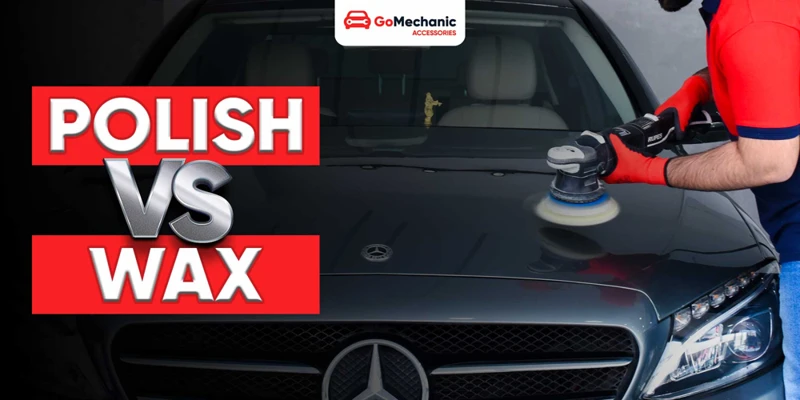
As we strive to maintain the cleanliness and appearance of various surfaces in our homes, we may come across the choice between using polish or wax. If you’re unsure of the differences between these two products, you’re not alone. However, understanding their distinct compositions and modes of operation can help you make an informed decision about which one to use. In this section, we’ll take a closer look at what polish is, including its composition and how it works to enhance the shine and durability of surfaces. For more information on the chemical properties of polish, you can check out our article on The Science Behind the Shine: Understanding Polish’s Chemical Properties. Or, if you’re interested in DIY polish recipes, you may want to check out our article on Eco-Friendly and Budget-Friendly DIY Polish Recipes.
Composition
Polish and wax have different compositions which determine their effectiveness in enhancing shine and resilience of surfaces.
Composition of Polish:
| Components | Functions |
| ————- | ————- |
| Abrasives | Cleans and removes scratches, grease and grime |
| Solvents | Dissolves dirt and grime on surfaces |
| Binders | Helps to keep the abrasive particles together and adhere to the surface |
| Emulsifiers | Promotes the even distribution of ingredients, which ensures the surface is polished evenly |
| Oils | Makes the surface shiny, enhancing visual appeal and provides extra protection to the surface from oxidation |
Most commercial polishes in the market also contain additives such as fragrances and colorants. They may come in different formulations and are typically either oil-based, water-based or solvent-based. However, the main components stated above are universally utilized.
Polish works by incorporating the abrasive particles into the surface of the material. The abrasive helps in removing scratches and dirt from the surface, thereby making the surface smooth and ready to receive a protective coat of oil. The emulsifiers ensure the polishing ingredients are evenly spread on the surface, giving it an even finish. The oils that are part of the polish adhere to the surface and form a protective coating. This coating is what provides the shine to the surface, protects it from dullness, and oxidation.
To learn more about benefits of furniture polish read Furniture Polish Benefits or tips for polishing wooden surfaces Wooden Surface Polish Tips.
How it Works
When it comes to how polish works, it contains a mixture of microscopic abrasive particles that help remove imperfections on the surface of your car’s paint. These tiny particles are like a very fine sandpaper that gently scrubs away any blemishes or dullness, revealing a brighter and smoother surface. The polish also helps to fill in any small scratches or swirl marks, making them less noticeable.
Benefits:
- Removes imperfections on the surface
- Brightens and smoothens the surface
- Fills in small scratches or swirl marks
Wax, on the other hand, uses a combination of natural and synthetic ingredients to protect your car’s paint from environmental factors such as UV rays, acid rain, and road salt. When applied, the wax creates a barrier between the car’s paint and the elements, preventing damage and oxidation.
Benefits:
- Protects the car from environmental factors
- Prevents damage and oxidation
While polish and wax serve different purposes, they are often used together for optimal results. The polish prepares the surface by removing imperfections and smoothing the surface, while the wax protects and seals the surface, giving it a vibrant shine.
What is Wax?
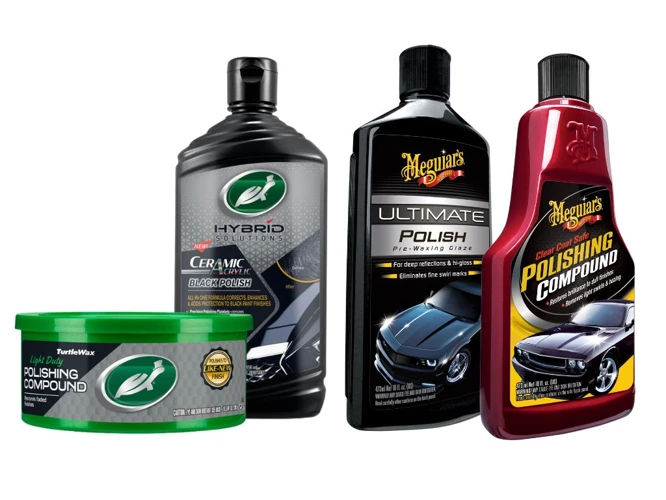
If you’re looking for a way to enhance the shine and resilience of your car’s paint, you may have heard of wax. Wax is a popular tool in the car detailing world, but what exactly is it? Let’s take a closer look at this substance and how it can be used to achieve a showroom-quality finish on your vehicle.
Composition
When it comes to understanding the difference between polish and wax, it’s important to start with their composition.
Polish Composition: Generally, polishes are made up of solvents, abrasives, and oils. The solvents help to break down any contaminants that may be on the surface, while the abrasives work to remove any imperfections or scratches. Oils are also included in the formula to help nourish and protect the surface. Some polishes may also contain synthetic polymers or silicone resins, which help to create a protective barrier and enhance the shine.
| Component | Function |
|---|---|
| Solvents | Break down contaminants |
| Abrasives | Remove imperfections and scratches |
| Oils | Nourish and protect the surface |
| Synthetic Polymers or Silicone Resins | Create a protective barrier and enhance shine |
Wax Composition: On the other hand, waxes typically consist of natural waxes, such as carnauba or beeswax, mixed with solvents and oils. The waxes act as a protective layer on the surface, while the solvents help to dissolve any surface contaminants. Oils are also included in the formula to nourish and protect the surface.
| Component | Function |
|---|---|
| Natural Waxes (Carnauba, Beeswax) | Create a protective layer on the surface |
| Solvents | Dissolve surface contaminants |
| Oils | Nourish and protect the surface |
Understanding the composition of polish and wax is important in determining which product is best suited for specific needs. While both products have similar functions, the specific combination of components can make a difference in their effectiveness.
How it Works
When we talk about how polish and wax works, we need to understand their compositions and their respective purposes. Polish is made up of abrasive particles that help remove imperfections on a surface such as scratches, swirls, and water spots. These particles are suspended in a liquid or paste that can be applied to the surface using a cloth or applicator pad. Once applied, the abrasive particles work to wear down any imperfections on the surface, leaving a smooth and even finish.
On the other hand, wax is made up of natural or synthetic ingredients that provide a protective layer over the surface. The wax is applied to the surface in a thin layer and as it dries, it forms a protective barrier that shields the surface from harmful elements such as UV rays, moisture, and dirt. Additionally, wax also gives the surface a glossy finish that enhances its color and shine.
It’s important to note that while both polish and wax can enhance the appearance and resilience of a surface, they serve different purposes. Polish is used to remove imperfections and enhance the clarity and depth of the surface, while wax is used to protect the surface and maintain its shine over time. It’s also worth noting that while polish is abrasive, it should not be used too frequently as it can wear down the surface over time, leading to a dull finish. Similarly, wax should not be applied too thick as it can lead to a smeared or uneven finish. It’s essential to use both polish and wax in moderation and follow the instructions carefully to achieve the best results.
Polish vs. Wax: The Pros and Cons

When it comes to enhancing the shine and resilience of your car’s paint, there are two popular methods: polishing and waxing. While both aim to achieve a glossy finish, they differ in their composition, application, and effectiveness. In this section, we’ll explore the pros and cons of polishing and waxing to help you decide which method will best suit your needs. Let’s dive in!
Pros and Cons of Polish
Polish is a product that is used to enhance the shine and resilience of surfaces such as cars, furniture, and floors. It is important to weigh the pros and cons of using polish before deciding to use it on a specific surface. Here is a breakdown of the pros and cons of using polish:
| Pros | Cons |
|---|---|
| Restores shine to dull surfaces | Can create a buildup if overused |
| Protects surfaces from damage caused by sunlight, dust, and dirt | Cannot remove deep scratches or stains |
| Reduces the appearance of small scratches and swirl marks | Can be time-consuming to apply properly |
| Can be used on a variety of surfaces including paint, plastic, and metal | May not be suitable for all surfaces |
As you can see, there are both advantages and disadvantages to using polish. While it can restore shine and protect surfaces, it can also create a buildup and be time-consuming to apply. It is important to consider these factors before deciding to use polish on any given surface.
Pros and Cons of Wax
Pros | Cons
— | —
Enhances shine: Wax creates a high gloss finish on your vehicle that can last for several weeks, giving it a smooth and polished appearance. | Short-lived: Compared to polish, wax has a shorter lifespan and needs to be reapplied more frequently to maintain its shine.
Protective layer: Wax helps protect the paint and clear coat from damage caused by UV rays, dirt, and debris. It forms a protective layer over the surface of your vehicle and can help extend the life of your paint job. | Time-consuming application: Waxing your vehicle takes more time than polishing because it requires more elbow grease to apply and buff.
Easy application: Most waxes are easy to apply and can be done by hand, making it accessible for the average car owner. No special equipment is required. | Less effective on heavily damaged paint: Wax may not be able to effectively repair or hide heavy scratches, dents, or other damage to the vehicle’s paint job.
Less abrasive: Wax is less abrasive on the surface of your vehicle compared to polish, making it a safer choice for frequent use. | May not enhance color: Some wax products may not enhance the color of your vehicle, leaving it looking dull or faded. It’s important to choose a product specifically designed for enhancing color if that’s the desired outcome.
Which One to Choose?
When it comes to choosing between polish and wax, it is important to consider your needs and the condition of your car’s paint. Here’s a breakdown of the pros and cons of each:
| | Polish | Wax |
|———-|——–|——–|
| Pros | Restores shine and color to paint. Removes scratches and swirls. Provides protection against UV rays and other environmental damage. | Adds a layer of protection to paint, shielding against dirt and debris. Enhances shine and color. |
| Cons | May require additional products for optimal results. Can be more time-consuming. Does not provide as much protection. | Can sometimes leave behind streaks or residue. May require frequent application. Does not repair paint damage. |
Ultimately, the decision between using polish or wax comes down to your goals for your car’s paint. If you are looking to restore shine and correct minor imperfections, polish is the way to go. However, if you are simply looking to protect your car’s paint and enhance its appearance, wax may be the better choice.
When to Use Polish

Polish is typically used when there are visible scratches, swirls or dullness on the surface of the material. It essentially acts as an abrasive that removes a thin layer from the top of the material, which results in a smoother and shinier surface. However, it is important to note that polish is not always necessary and should only be used when needed. Overuse of polish can cause damage to the material’s surface layer and diminish its overall resilience.
It is recommended to use polish on a regular basis for high-traffic areas or surfaces that are exposed to harsh weather conditions. This includes cars, boats, and outdoor furniture. Polish is also helpful for restoring the appearance of old materials and can be used after repairs have been made. Additionally, if you have just purchased a new car or other material, it is a good idea to use polish to protect and maintain its shine.
The decision to use polish should be based on the condition of the material’s surface and its level of wear and tear. It is important to not overuse polish and to only apply it when necessary for optimal results.
When to Use Wax

Wax is a great product to use after you’ve polished your surface, as it provides extra protection and shine. It’s also a great option for maintaining the shine of your car, boat, or other vehicle. Wax can be used on any type of paint finish, including clear coats, but it’s best suited for surfaces that are in good condition, as it won’t fix any existing damage.
One of the best times to use wax is after you’ve washed and polished your vehicle. This ensures that the surface is clean and free of any contaminants that could interfere with the wax’s ability to bond. If you’re using a new wax or switching to a different product, be sure to remove any residual polish or wax before applying the new wax.
Waxing should be done every few months to maintain the protective layer on your vehicle. If you often expose your vehicle to harsh conditions, such as extreme heat, saltwater, or acidic substances, waxing your vehicle more frequently can help keep it protected.
Another great time to use wax is before exposing your vehicle to the sun or elements for an extended period of time. A layer of wax can prevent fading, oxidation, and water spots that can occur as a result of prolonged exposure.
Remember that wax is not a substitute for proper cleaning or maintenance. It’s important to clean your vehicle regularly to prevent buildup of dirt and debris, which can damage the surface over time.
How to Use Polish
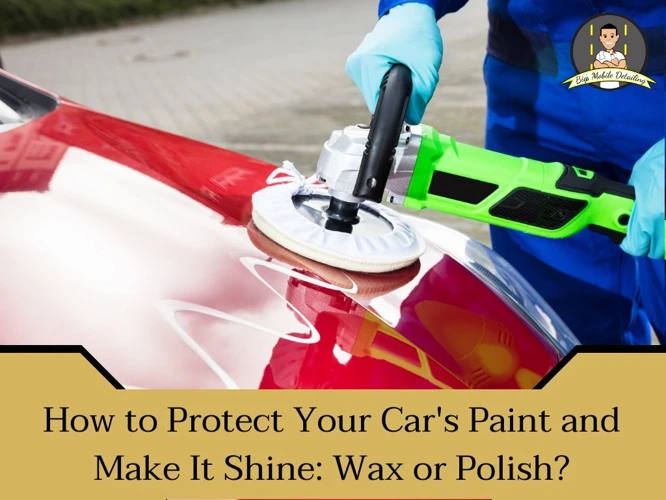
If you want to give your car’s paint a new lease of life and restore its original shine, then using a good quality polish is essential. But, using car polish should not be taken lightly, as a wrong application or bad product can cause irreversible damage to your car’s paintwork. However, don’t worry; we have got you covered. In this section, we will guide you through the steps of using car polish, so you can achieve that perfect finish without damaging your vehicle.
Step 1: Clean Your Surface
Before applying polish or wax, it’s essential to clean the surface thoroughly. A clean surface ensures that there is no dirt or debris that might scratch the surface while buffing. The following table lists the steps to clean your surface before applying polish or wax.
| Step | Description |
|---|---|
| Step 1 | Wash the Surface Use a car wash soap or a mild detergent to wash the surface. Avoid using dish soap or any harsh chemical cleaners as they can damage the surface. Rinse the surface thoroughly with water to remove any soap residue. |
| Step 2 | Dry the Surface Once you’ve rinsed off the soap, use a microfiber towel to dry the surface. Pat the surface dry instead of rubbing it to avoid scratching the surface. |
| Step 3 | Clay the Surface Use a clay bar and a lubricant designed for claying to remove any stubborn contaminants such as tree sap or tar. Clay the surface in small sections, working from top to bottom, and wiping the surface clean with a microfiber towel after each section. |
| Step 4 | Polish the Surface (Optional) If your surface has any imperfections or swirl marks, use a polishing compound to remove them. Apply the compound with a foam pad using a rotary or dual-action polisher. Wipe off any excess compound with a microfiber towel after each section. |
Following these steps before applying polish or wax can ensure a smooth and shiny surface, free of any scratches or debris.
Step 2: Apply the Polish
After cleaning the surface, it’s time to apply the polish. Make sure to read the instructions on the polish before applying, as different types of polish can have different application methods. In general, here are the steps to properly apply polish:
| Step 1: | Shake the polish bottle well before using it to ensure that the polish is properly mixed. |
| Step 2: | Apply a small amount of polish onto the applicator pad or cloth. Do not use too much polish as it can lead to smearing and streaking. |
| Step 3: | Begin applying the polish to the surface, using circular and overlapping motions. Work in small sections at a time to ensure proper coverage and to avoid the polish drying before it can be fully buffed out. |
| Step 4: | Pay extra attention to any areas with scratches or swirl marks, as they may require more polishing. |
| Step 5: | Continue applying polish until the entire surface has been covered. |
Once the polish has been applied, it’s time to move on to buffing the surface.
Step 3: Buff the Surface
After applying polish or wax to your surface, it’s time to buff it to create a shiny finish. The buffing process involves rubbing the surface with a clean towel, cloth, or buffing pad until it shines. Here are the steps to follow when buffing your surface:
- Step 1: Take a clean microfiber towel or buffing pad and fold it in half.
- Step 2: Using moderate pressure, rub the folded towel or buffing pad back and forth over the entire surface using circular motions.
- Step 3: As you buff, pay attention to the product instructions. Some polishes or waxes require a certain amount of time to dry before buffing.
- Step 4: Continue buffing until the surface is shiny and free of streaks or residue. Be careful not to over-buff, which can remove the polish or wax and leave the surface unprotected.
- Step 5: After buffing, take a clean microfiber towel and wipe away any remaining product or residue to reveal the final finish.
Remember, buffing is an important step in the polishing and waxing process as it helps to evenly distribute the product and create a polished finish. Be patient and take your time, as rushing can lead to a less-than-perfect result. With the right technique and tools, you can achieve a glossy, showroom-worthy finish that will turn heads wherever you go.
How to Use Wax
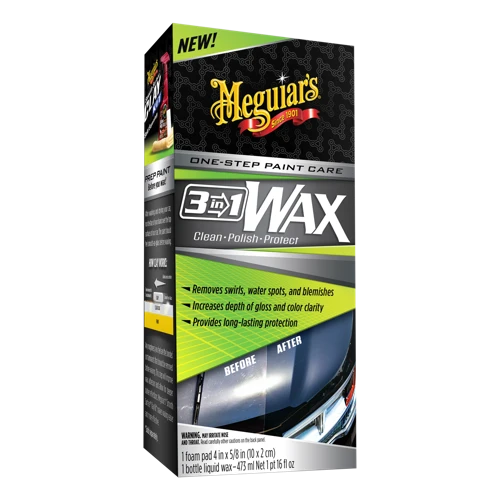
If you’re looking for a quick and easy way to enhance shine and protection for your car’s paint, waxing can be a great option. However, it’s important to use the right products and techniques to get the best results. In this section, we will walk you through the step-by-step process of how to use wax to get a long-lasting shine and protection for your vehicle’s exterior. So, get ready to learn the ins and outs of waxing your car like a pro!
Step 1: Clean Your Surface
Before applying polish or wax to your vehicle, it is essential to clean the surface thoroughly to ensure a smooth and even application. Follow these steps to clean your surface properly:
- Step 1: Start by rinsing your vehicle with water to remove any loose dirt and debris.
- Step 2: Use a high-quality car wash soap and a soft sponge or microfiber cloth to gently wash the vehicle. Be sure to avoid harsh detergents or abrasive materials that can scratch the surface.
- Step 3: Rinse the vehicle with clean water to remove the soap residue.
- Step 4: Dry the vehicle using a chamois or soft towels to remove any remaining water droplets.
- Step 5: Inspect the surface for any remaining dirt or contaminants. Use a clay bar or detailing clay to remove any stubborn contaminants that could affect the final shine.
- Step 6: Finally, use a surface cleaner or pre-wax cleaner to remove any remaining residue or oils that could impact the polish or wax’s effectiveness.
By taking the time to clean your surface thoroughly, you’ll ensure a smooth and even application of polish or wax, and maximize the shine and resilience of your vehicle’s finish.
Step 2: Apply the Wax
Once you have cleaned the surface thoroughly, it is time to apply the wax to enhance shine and protection. Follow these steps to apply wax to your surface:
- Choose the Right Wax: Make sure to use a high-quality wax that is appropriate for your surface. For example, car wax should be used on cars, and furniture wax should be used on wooden furniture. Read the instructions carefully and make sure to choose the appropriate type of wax for your surface.
- Apply the Wax: Using a clean and soft cloth, apply a small amount of wax to the surface. Begin at one end and work in small sections, applying the wax evenly in circular motions. Be sure not to apply too much wax, as it can be difficult to remove.
- Let it Dry: Allow the wax to dry for the recommended time specified in the instructions. This usually takes a few minutes, but can vary depending on the product and the surface.
- Buff the Surface: Using a clean and soft cloth or a polishing machine, buff the surface in circular motions until the wax is evenly spread and the surface is shiny. Be sure to remove any excess wax that may have accumulated.
When applying wax, it is vital to choose the appropriate wax for the surface and to apply it evenly. Make sure to follow the instructions carefully and allow the wax to dry before buffing the surface. By taking these steps, you can achieve a shiny and protected surface that will last for a long time.
Step 3: Buff the Surface
After applying the polish or wax, the next step is to buff the surface to achieve a smooth and shiny finish. Buffing involves using a soft cloth or buffing pad to remove any excess product and enhance the shine.
When buffing, it’s essential to use a buffing pad or soft cloth that won’t scratch the surface. Microfiber towels are an excellent choice for buffing as they are soft, absorbent, and don’t leave behind any lint.
To buff the surface effectively, follow these steps:
| Step | Action |
|---|---|
| Step 1 | Take a clean, dry microfiber towel or buffing pad |
| Step 2 | Use light pressure to buff the surface in a circular motion |
| Step 3 | Continue buffing until the surface is smooth and shiny |
| Step 4 | Inspect the surface for any remaining residue or streaks |
| Step 5 | If necessary, repeat the buffing process until the desired shine is achieved |
Be careful not to over-buff the surface, as this can cause damage or swirl marks. Also, avoid buffing in direct sunlight, as this can cause the product to dry too quickly and create streaks.
By following these buffing tips, you can achieve a glossy and resilient finish that will protect your vehicle or furniture for months to come.
Which Products to Use
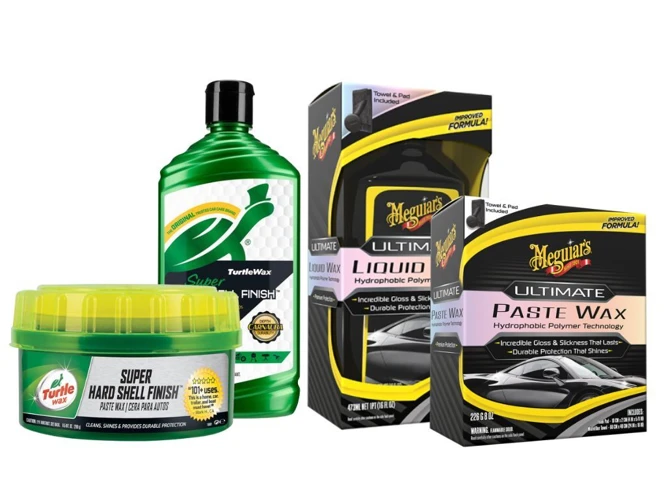
When it comes to choosing the right products for polishing or waxing your car, it’s important to do your research and select high-quality items that have a proven track record of success. Keep in mind that not all polishes and waxes are created equal, and using subpar products could end up doing more harm than good to your vehicle’s finish.
For polish: Look for polishes that are formulated specifically for your type of paint. Some polishes are designed for use on clear coats, while others are better suited for single-stage paint jobs. You’ll also want to choose a polish that contains fine abrasives to help remove scratches and imperfections without causing further damage to your car’s finish.
For wax: Waxing products come in many forms, including paste wax, liquid wax, and spray wax. Choose the type that you feel most comfortable working with. Additionally, select a wax that is appropriate for your car’s paint type – for example, if your car has clear coat paint, go for a polymer or synthetic wax that is gentle on the finish.
Consider the brand: It’s always a wise move to choose products from trusted manufacturers who are known for producing high-quality car care items. Some popular brands include Meguiar’s, Chemical Guys, and Turtle Wax.
Do your research: Before purchasing any polish or wax, read reviews online from other car enthusiasts who have used the product. Look for feedback regarding ease of use, durability, and overall effectiveness. This information can help you make a more informed purchasing decision.
Ask for recommendations: If you’re new to car detailing, ask for recommendations from friends or family members who have experience with polishing and waxing their vehicles. They may be able to recommend specific products that have worked well for them in the past.
In general, it’s important to invest in good quality products for your car’s maintenance. This will not only give you a better result, but also help protect your vehicle’s paint and finish over time.
Polishing and Waxing Tips
As you start to polish and wax your surfaces, there are a few tips and tricks that can make the process easier and more effective. These tips can help you achieve the best results without damaging your surfaces or wasting your products. Whether you are a beginner or an experienced detailer, these useful tips will ensure that you get the most out of your polishing and waxing routine.
Tip #1: Test in an Inconspicuous Area
It is important to note that before using any polishing or waxing product, it’s always a good idea to test it in an inconspicuous area first. This is the number one tip to remember when it comes to car care. A small test patch will give you an idea of how the product will react to the surfaces of your car, and if there are any adverse reactions, you can avoid damaging the entire surface.
Why is this important? Different products have unique chemical compositions that may react differently depending on the finish of your car. Applying the polish or wax on an inconspicuous area will allow you to see if the product is compatible with your car’s finish. Some products may cause fading, staining or discoloration that can be difficult to correct afterwards.
How to test: To test a new polishing or waxing product, apply a small amount to an inconspicuous area such as the underside of a fender or the door jamb. Leave the product to sit for a few minutes, then wipe it off with a clean cloth. The area should be inspected for any signs of discoloration or damage. If there are any adverse reactions, do not use the product on the entire surface.
It’s crucial to test new products on an inconspicuous area before applying them to larger surfaces. This will help you determine compatibility with the finish of your car and avoid damaging the entire surface.
Tip #2: Avoid Overuse
To achieve the best results while polishing or waxing your vehicle, it’s essential to avoid overuse of the products. Overuse can lead to compound abrasion and cause the paint to become damaged. It’s important to use only the required amount of polish or wax.
Here are some tips on how to avoid overuse:
| Tip | Description |
|---|---|
| Follow Instructions | Always follow the instructions provided by the manufacturer. They know the necessary quantity of product required for the best results. Trying to use more than the recommended amount will not provide better results. |
| One Section at a Time | Work on one section of the car at a time to avoid putting too much polish or wax on the surface. Apply a small amount of product and spread it evenly over the car’s surface. |
| Avoid Scratching | Wiping the surface of your vehicle with a dry cloth can lead to scratches. Always use a microfiber towel to buff the surface after applying the product, as it will not damage the paint. |
| Periodic Maintenance | Avoiding overuse means that you will not have to apply these products frequently. Periodic maintenance is always better than excessive use, and it will keep your vehicle’s paint looking new for a longer time. |
By following these simple tips, you can avoid overuse and achieve the best results with minimal effort. Remember, less is always more when it comes to polishing and waxing your vehicle.
Tip #3: Use the Right Tools
Using the right tools is crucial when it comes to achieving the best results with your polish or wax. Below is a table detailing the tools you’ll need for each step of the process, as well as some tips on how to use them effectively.
| Tool | What it’s Used For | Tips for Use |
|---|---|---|
| Polishing Pad | Applying polish evenly to the surface. | Choose a pad with the right thickness and density for your vehicle’s paint. Use a clean pad for each section of the vehicle. |
| Microfiber Towel | Removing excess polish or wax from the surface. | Choose a towel that is gentle on the paint and won’t scratch. Use a fresh towel for each section of the vehicle. |
| Polishing Machine | Buffing the surface to a high shine. | Choose a machine that is the right size and power for your needs. Start with a lower speed setting and gradually increase as needed. |
| Wax Applicator Pad | Applying wax evenly to the surface. | Choose a pad that is soft and absorbent. Use a clean pad for each section of the vehicle. |
Using the right tools will not only help you achieve better results, but it will also prevent damage to your vehicle’s paint. Remember to always use gentle, clean tools and to take your time during the process. Rushing or using the wrong tools can lead to mistakes and damage that will be expensive to fix.
Conclusion
After discussing the differences between polish and wax, it’s clear that both products have their advantages and disadvantages. Polish is great for removing light scratches and swirls, as well as restoring and enhancing the shine of your paint. On the other hand, wax protects your paint from environmental damage and provides a layer of defense against the elements.
When it comes to deciding which product to use, it ultimately depends on your goals and the condition of your paint. If you’re looking to restore the shine and remove minor imperfections, polish may be the better option. However, if you’re more concerned with protecting your paint from future damage, using wax is recommended.
Regardless of which product you choose, it’s important to follow the proper steps when applying and removing them. This includes cleaning your surface, using appropriate tools, and avoiding overuse.
In conclusion, both polish and wax have their place in auto detailing and can be used together or separately to achieve the best results. By understanding the benefits and limitations of each product, you can make an informed decision for your specific needs and ensure your paint stays looking its best for years to come.
Frequently Asked Questions
What is the difference between polish and wax?
Polish is designed to remove minor scratches and swirl marks, while wax provides a protective coating to the surface.
Can I use polish and wax on any surface?
No, it is important to check the product specifications to ensure it is safe for use on the intended surface.
What are the benefits of using polish?
Polish can remove minor scratches, restore shine, and prepare the surface for waxing.
What are the benefits of using wax?
Wax provides a protective layer, enhances shine, and repels water and debris from the surface.
Which is better for older vehicles: polish or wax?
Polish is better for older vehicles with scratches and swirl marks, while wax is better for newer vehicles with minimal imperfections.
How often should I polish my car?
It depends on the condition of the surface and the frequency of use, but generally 2-3 times a year is recommended.
How often should I wax my car?
Waxing should be done 3-4 times a year to maintain the protective coating.
Can I apply wax without polishing first?
Yes, but it is recommended to polish the surface first to ensure a smooth and even coating of wax.
Can I use both polish and wax on the same surface?
Yes, using polish first followed by waxing is a common practice in car detailing.
What is the best way to remove excess polish or wax?
Using a microfiber cloth in circular motions to buff off excess product is the best way to remove polish or wax without damaging the surface.
